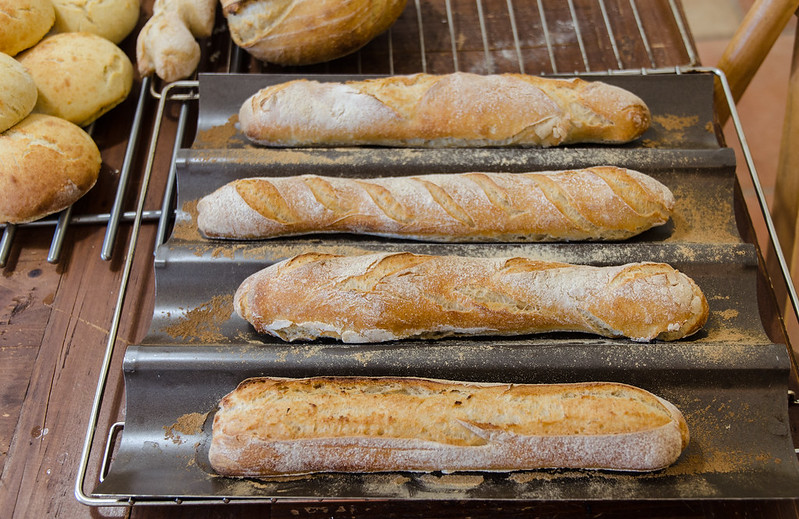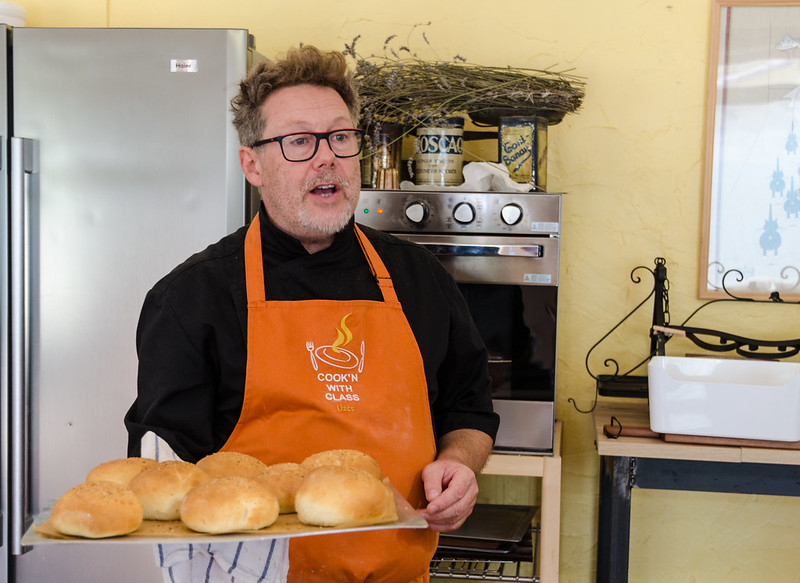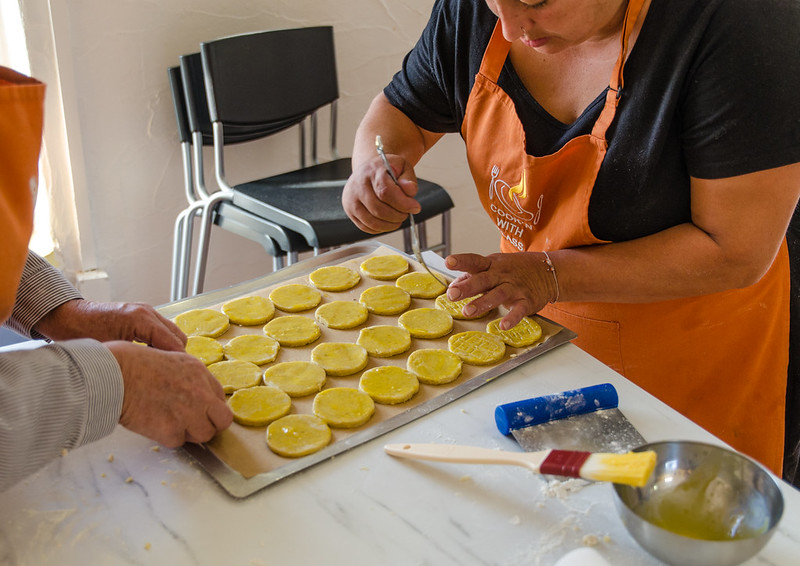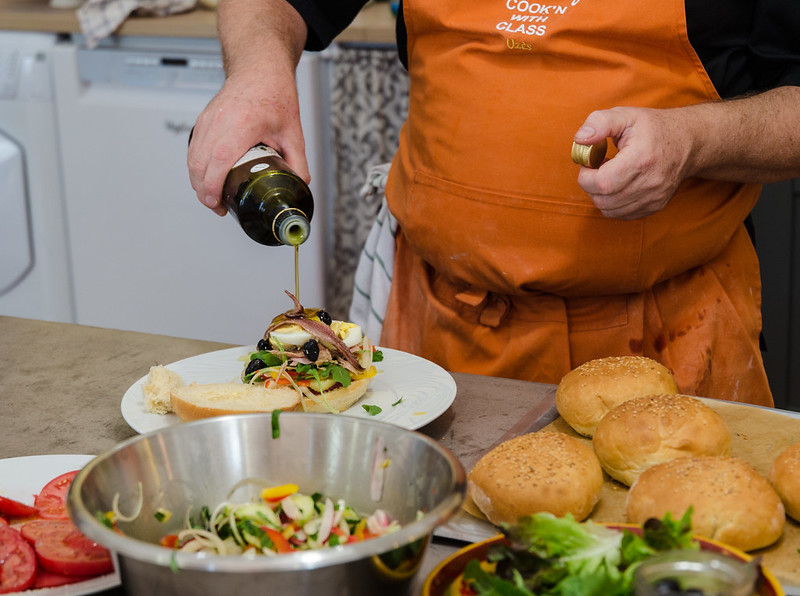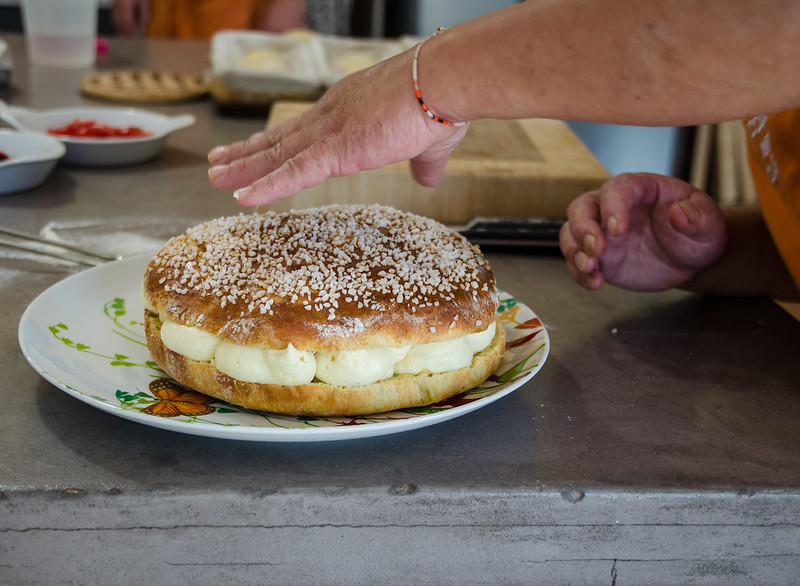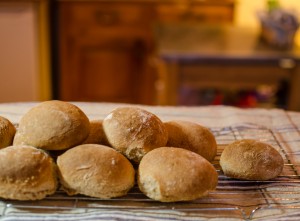I was one of the guinea pigs for Cook’n with Class’s newly launched bread masterclass held in Arpaillargues, just outside the lovely Languedoc town of Uzès. We were just three students with chef Eric in the spacious kitchen.
We started each day sitting around the table for breakfast: tea or coffee, and bread of course — from day 2 our own productions from the previous day. This was a good opportunity to a) wake up and b) get to know our fellow students. Then each morning was spent in a whirl of preparation, mostly bread but a few other items too: a delicious chocolate tart, and a classic tropézienne (brioche filled with crème diplomate) are just two examples. Most of the breads required several hours’ or an overnight rest, so we would make and shape the dough, then put it in the fridge for baking the next day. The morning’s work finished around 1 pm, around the lunch table. Each day we made something for lunch: quiche, pan bagnat, pizzas, to be served along with salad and followed by cheese, with bread and wine of course, and a dessert also made by us.
Eric is a great teacher, relaxed and communicative, always ready to answer questions and explain why he’s doing things a particular way. No matter how well I feel I know how to do something, I always learn something new from listening to and watching a pro. For example, in all the many years I’ve been making shortcrust pastry, I’ve never known about fraisage — smearing the just-blended pastry on the countertop to blend the ingredients without developing the gluten too much.
Likewise, I now make all of our bread, but the many different breads we made introduced new techniques, and nothing beats being able to see and feel how the dough should be. My best moment was seeing the amazing baguettes we made come out of the oven — my previous efforts have never approached this. Instead of taking them home, we ate nearly all of them while drinking aperos — on their own, or with Eric’s home-made pâté.
There were some surprises too. I didn’t think I’d like chocolate bread, as I’m not a huge chocolate lover, but it was one of my favourites of the week: bread with cocoa powder and chopped dark chocolate in the dough. Eric reckoned it would be good with wild boar stew, but we also loved it for breakfast with marmalade. It’s a keeper in more ways than one — it was still soft and chewy several days later. I also wouldn’t have counted myself a fan of hamburger buns, but these home-made ones were a great base for pan bagnat. Oh, and potato bread made with instant potato flakes — a winner for serving with soup or stew!
At the end of day 3 we went home with goodie bags containing our baked goods plus some of Eric’s sourdough starter, and of course a booklet of recipes. I’d recommend this class to any keen baker — no need to be an expert to benefit from it. What a pleasure to spend three mornings just baking with like-minded people! And as afternoons are free, you can use them to explore lovely Uzès and the surrounding area.
